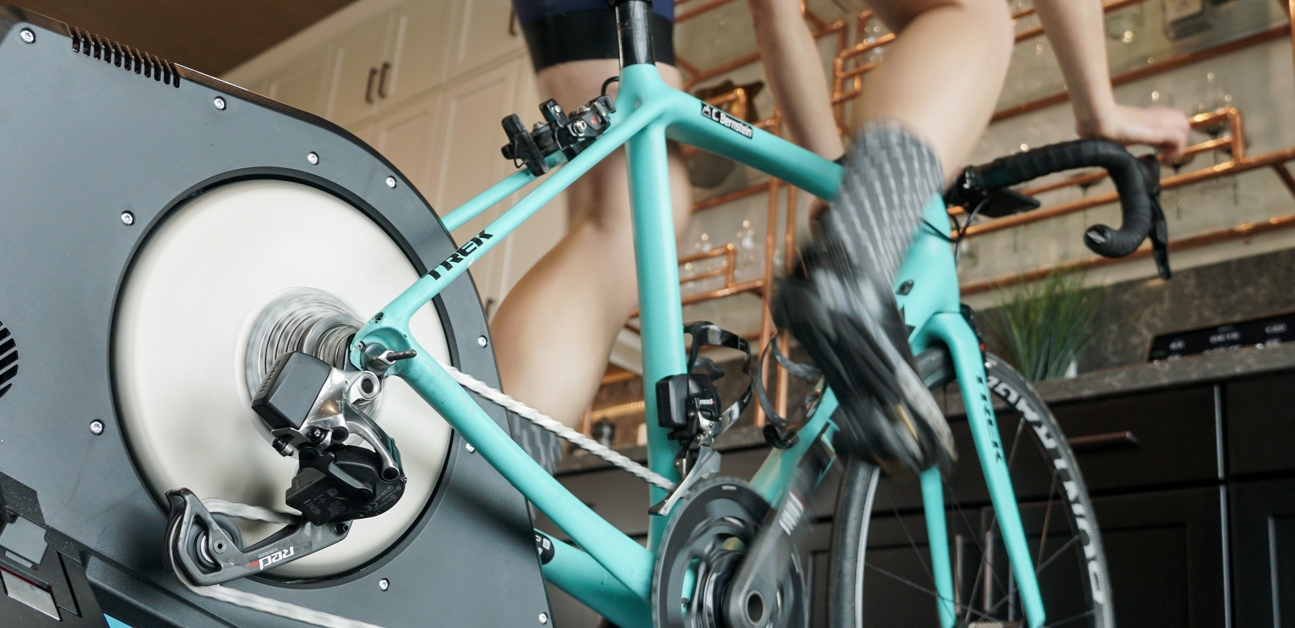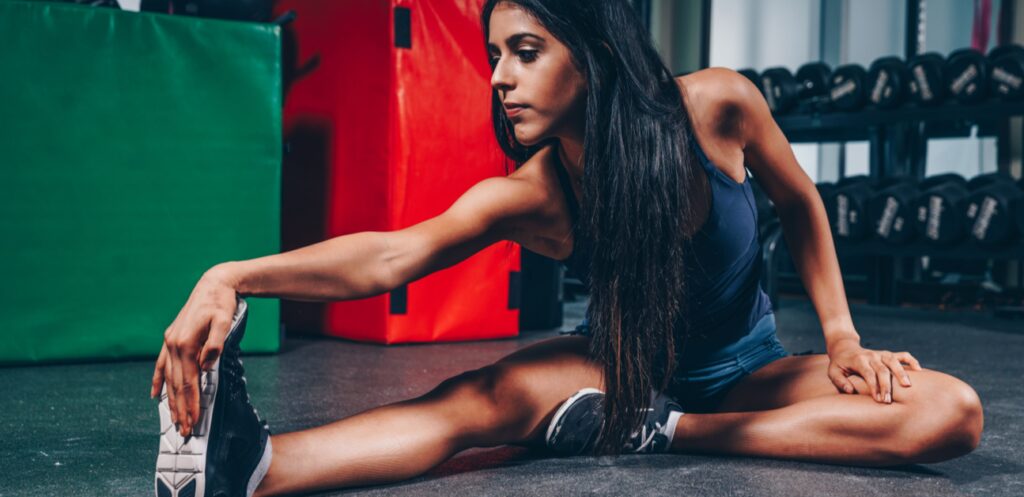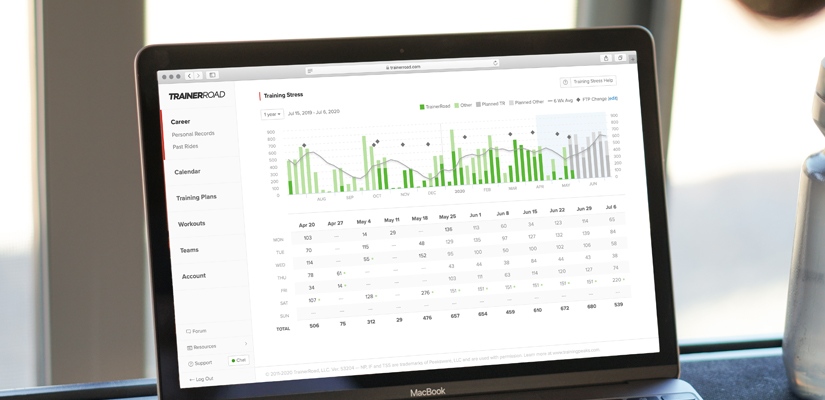Training Basics: Get the Most Out of Your Cycling Training

Becoming a faster cyclist takes hard work. But how can you get the most out of your training? Here are ten training principles that will help make your next season the best one ever.
1. Create A Plan
Before you get on the bike, you need a plan. To start, you’ll need to decide on your goals for the upcoming season. You could base this on a race or a particular type of fitness if you don’t have an event. Next, decide how many hours you can devote to training. Be realistic about the hours you can commit to training and how much your body can handle.
Adaptive Training
Get the right workout, every time with training that adapts to you.
Check Out TrainerRoadA great tool to use is Plan Builder. Using how much you ride, your experience, and the reason you are training, Plan Builder will create a custom plan for you. It takes the guesswork out of choosing the right training plan and will peak your fitness for your goal event or discipline. Check out TrainNow to get all the benefits of structured workouts when you’re not ready for a training plan.
2. Assess Your Fitness
An assessment intends to get a snapshot of your fitness and is a critical first step for high-quality training. It helps you get the most out of your training because it ensures that you are providing the correct stimulus to drive adaptations. An FTP test isn’t a contest or pass/fail exam. It’s the basis for scaling the workouts to your level, and skipping out on it means you could be leaving gains on the table.
An efficient way to assess your FTP is with a Ramp Test. The TrainerRoad Ramp Test is an assessment that uses gradual increases in power to estimate FTP. The test starts with a 5-minute warmup, and with every minute after that, it gets slightly harder until the rider cannot maintain target power any longer. Ideally, you’ll want to complete a Ramp Test every 4 to 6 weeks at the start of each training block.
3. Emphasize Quality Over Quantity
Getting the most out of your training is all about resource management, and for most of us, the most precious resource is time. A shorter, but structured, high-quality workout trumps a longer, unstructured one. This is because growing fitness is a process of stimulus and adaptation. Quality workouts deliver the right amount of stimulus, and as a result, your fitness improves.
Sometimes, we lack more than time and struggle with motivation, fueling, and recovery during a workout. At that point, it is even more crucial to emphasize quality. If that is the case, there are three progressive ways to save your workout from failure.
4. Don’t Skip Base Training
Much like a pyramid, our fitness builds in succession. The initial work serves as a foundation that will eventually support a higher peak. During the Base Phase, several transformations happen on different levels.
As you focus your training on developing your aerobic capacity, you train your body to become more efficient at turning fuel into energy using oxygen. This transformation takes place within the mitochondria in your muscles. So, as you spend more time stressing your aerobic energy system, your body creates more mitochondria that are more efficient. Completing base training will make you faster.
5. Incorporate Strength Training
Stronger cyclists are faster cyclists. Strong riders are more resistant to injuries in the event of a crash or through repetitive use. But the primary benefit of strength training is that it helps you become more efficient at transferring power and recruiting muscles in the pedal stroke.
Strength training should be approached with specific intentions and applied progressively as ability increases. You don’t have to spend hours in the gym to reap the benefits, but you’ll need to continue throughout the year. That way, you don’t lose what you’ve built.
6. Invest in Recovery
The right amount of rest and recovery will help you get more out of your next workout. It’s during this time that your body is adapting and getting faster. Resting, eating well, and refraining from unnecessary training stress is a great way to aid the recovery process.
Don’t forget about sleep. Training is a massive stress on your body. So you may need more than eight hours a night. The best sleep schedule is a regular one. Rest, recovery, and sleep also restore your mental energy and motivation.
7. Have an Open Mind
Many times the greatest limiter is ourselves. Whether we pigeonhole our expectations or simply don’t believe in what is possible, having a closed mind will eventually affect our performance. Be open to new challenges and new areas of growth.
Don’t talk yourself out of anything with excuses or doubt. Don’t give yourself to the possibility that you’ll fail. Thinking you can’t do something all but ensures that you won’t. Start to expect great things from yourself each time you saddle up, and on those days when you simply can’t muster the positivity, take a break and scale back the intensity or ditch it entirely.
8. Optimize Your Training Setup
An optimal setup goes a long way in helping to maximize your training. If you’re training indoors, setting up a fan and towels are a must for heat and sweat management. Keep a bottle close by and select the gearing that best mimics your event. A bit of entertainment in the form of music or race analysis videos go a long way for motivation.
It’s important to optimize your Outside workouts as well. You can set up your Hammerhead, Garmin, or Wahoo head unit. You can go a step further and choose the most effective routes based on the type of workout. Just make sure to pick a place you can safely dig deep.
9. Read the Workout Description, Text, and Weekly Tips
For cyclists who want to win, there’s more to a workout than simply getting it done. To get the most out of your time on the trainer, you should know the goal of your workout and how to achieve it before you begin. The easiest way to do this is to read the workout description.
During the workout, Coach Chad provides on-screen instructions that include pedaling drills, posture reminders, and other tips to help you nail your intervals. The greatest benefit of Workout Text is that it keeps you focused throughout your time on the trainer and effectively covers how to conduct your workout and why you’re doing it.
10. Fuel The Work
It is hard to overstate the importance of carbs for cycling performance. Fueling for your workout will make it feel easier and help your recovery after. Eat a healthy, carb-centric meal 3-4 hours before an intense workout. Don’t forget about hydration. The general rule is to drink proactively and take in a bottle an hour. It’s important to remember that your nutrition should line up with your training and overall goals.
For more cycling training knowledge, listen to Ask a Cycling Coach — the only podcast dedicated to making you a faster cyclist. New episodes are released weekly.


